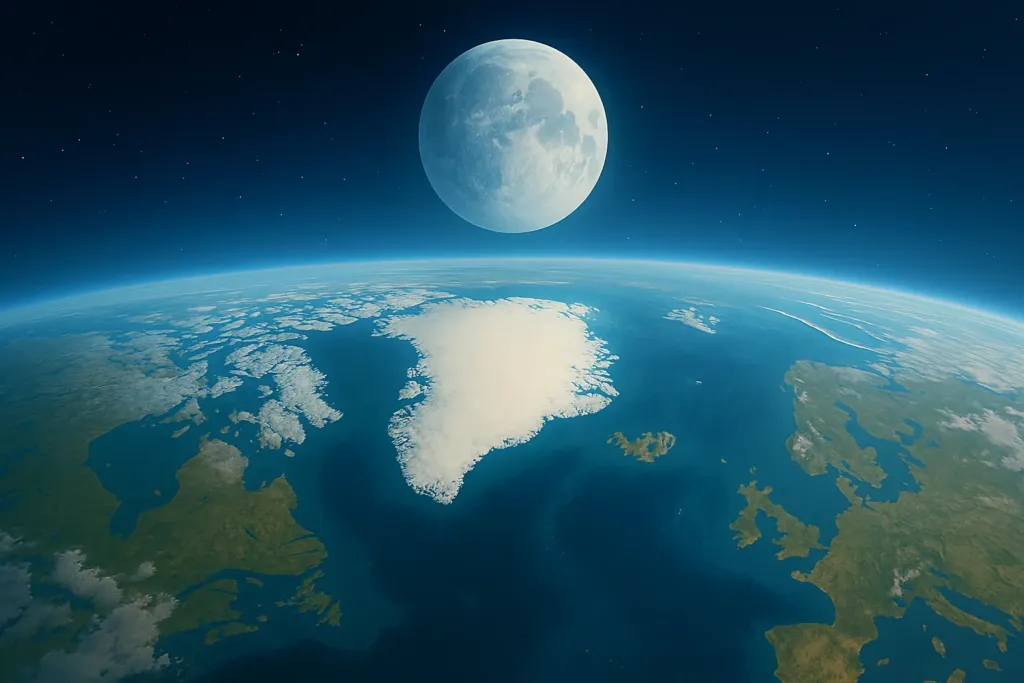С древних времён люди мечтали полететь в космос и увидеть Землю сверху. Сегодня астронавты и спутники регулярно присылают на Землю снимки невероятных сооружений — как рукотворных, так и природных. Говорят, что некоторые из них даже видны с Луны. Хотя это утверждение часто преувеличено, их размеры и масштабы поистине впечатляют.
Великая Китайская стена
Одно из самых известных рукотворных сооружений в мире и самая протяжённая оборонительная система на Земле, простирающаяся примерно на 21 196 километров через горы, пустыни и луга Северного Китая. Строительство началось ещё в III веке до нашей эры при императоре Цинь Шихуанди и было в основном завершено к XVII веку, во времена династии Мин. Вопреки распространённому мифу, Стена не видна невооружённым глазом с Луны, но некоторые её участки можно увидеть с орбиты при благоприятных условиях. Её необъятность ежегодно привлекает миллионы туристов.
Пустыня Сахара
Сахара — самая большая жаркая пустыня в мире, занимающая около 9200000 квадратных километров. Она занимает большую часть Северной Африки и выглядит из космоса как огромное желто-оранжевое пространство. С орбиты ее дюны, оазисы и уникальная геологическая структура — структура Ришат, или «Глаз Сахары», — отчетливо видны, завораживая астронавтов, наблюдающих за Землей.
Дельта реки Амазонки
Амазонка — самая полноводная река на Земле. Ее дельта в Атлантическом океане настолько обширна, что образует сложную сеть протоков и островов, простирающуюся более чем на 100000 квадратных километров. Тропические леса Амазонки производят значительную долю кислорода на планете, и с орбиты дельта выглядит как ярко-зеленый ковёр, контрастирующий с глубокой синевой океана.
Гренландский ледяной щит
Второй по величине ледяной щит на планете после Антарктиды, занимающий площадь более 1700 000 квадратных километров. Из космоса Гренландия выглядит как гигантский белый остров. В некоторых местах толщина льда превышает 3000 метров. Это место привлекает учёных, любителей экстремального отдыха и фотографов, жаждущих увидеть северное сияние.
Гранд-Каньон
Один из самых глубоких и длинных каньонов в мире, расположенный в штате Аризона, США. Его длина составляет около 446 километров, а глубина достигает 1800 метров. С орбиты он выглядит как тёмная извилистая линия, пролегающая через пустынные плато. Гранд-Каньон — объект Всемирного наследия ЮНЕСКО, ежегодно привлекающий миллионы туристов и исследователей.
Эти достопримечательности символизируют невероятные масштабы природы и человеческие возможности. Видимые даже с высот космоса, они напоминают нам о необъятности и разнообразии нашей планеты и вдохновляют на путешествия, чтобы увидеть их своими глазами.
- Turtle facts
- Pura Vida on the Road: the nuances of traveling Costa Rica
- Daring to Explore Again
- Los Angeles
- Aztecs
- The World of Varans
- Kenya Nchi Yangu Song
- A journey to the country where happiness matters more than wealth
- Somalia: A Country of Risk and Contrasts — Is It Worth Going?
- Macau
- Shakira — Waka Waka (This Time for Africa)
- Normandy
- Win a four-night Greek getaway for two in one of the most stylish resorts in the Aegean courtesy of Sani Resort
- Niger
- Sierra Leone
- How to Get Around Australia
- Chukchi
- Evacuation of Kyiv icons takes fight for Ukraine’s heritage to Louvre in Paris
- Dagestan: between the grandeur of nature and the challenges of tourism
- Panama











